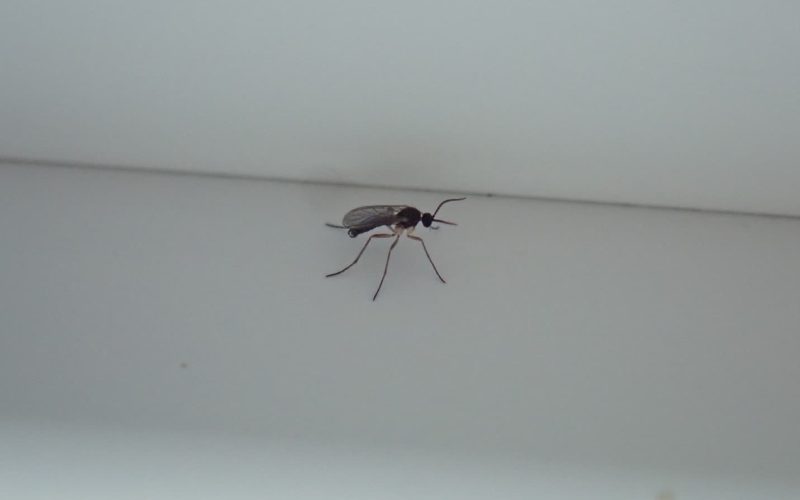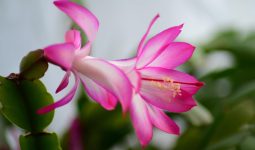What are Gnats? How serious can they be? How do they grow? How can plants prevent them? These are the burning questions nowadays.
Everyone who has houseplants in their homes wanted to know about them and their rapid increase.
In this article, we will provide the most information possible about gnats, how they form, and how they can reach your houseplants.
Stay with us until the end so that you will learn how to control them and how to save your plants from various diseases.
What are Gnats?
You might be dealing with Gnats if you are frustrated by the tiny insect-like flies that appear every time you go near your houseplants to water them.
Specifically, these are known as fungus Gnats. These pests are fascinated by houseplants‘ damp and fully drained potting soil.
Gnats require humid soil to lay their eggs. In damp soil, they feed their larvae, which is not good for your plant’s health.
How Do They Look?
Talking about the looks, the Gnats usually look like small mosquitoes. They are weak fliers. These fungal pesticides belong to the Orfelia and Bradysia species.
They have thin legs, transparent wings (some have light grey wings), and segmented antennae. These antennae are bigger than their heads. Gnats are very small insects.
The maximum growth of an adult gnat is about 1/8 to 1/16 inches, respectively.
How Serious Can Gnats Be?
Interestingly, gnats don’t harm people or pets. However, adult gnats don’t do much harm to your plants; instead, larvae munch on the tiny feeding roots of your plants.
It can affect the plant. If the plant doesn’t get enough nutrients from its roots, it may result in reduced growth.
Because they are so small, gnats can easily reach your gardens or nurseries through minor openings. Because they reproduce so quickly, it takes only a few gnats to cause major damage to your plants.
Moreover, the destruction of roots allows the diseased pathogens to enter the plant. The first and foremost symptom that your plant shows if it gets affected by gnats is wilting.
It causes general deterioration of the plant. Additionally, if you notice that your very young seedlings are crumpling, look like they are rooted in their place, or show no progress, it is the result of gnat damage.
How to Deal With Gnats?
If you find gnats in your plants, the first and foremost thing you should do is keep the infected plants away from the other plants so that the situation will not worsen.
These fungal pesticides need a humid soil atmosphere for their growth and development. You have to work with the soil to prevent your houseplant.
Allows the Soil to Dry
The simplest way to defeat gnats is to let the soil dry for many days before watering again. The gnats and their larvae cannot survive this atmospheric condition and die.
Another trick to prevent your plants is to grow them in a sterile potting mixture because they don’t require much organic matter for the young larvae to feed on.
Catch Them!
The pieces of raw potatoes grab the attention of adult mosquitoes. You can place the small pieces of potato flesh by the side of the soil and check under them often.
If you find the larvae feeding on the potatoes, remove them and place fresh pieces again.
Repeat the procedure until you remove all the larvae and adult gnats from your houseplant.
The Yellow color also attracts adult gnats. So, you should place a large strip of yellow tape along with the adhesives on it.
Place it at the side of your plant and wait. The adult gnats come and stick into the tape. When you seed many gnats, stick to the tap, remove it, and place another strip.
In this way, you successfully get rid of gnats relatively quickly. Moreover, removing these fungal pesticides from your nursery or houseplants is very easy and non-toxic.
Additionally, by this procedure, you will learn about the population of gnats in your place.
How to Control Gnats Biologically?
The biological methods are applied to control these fungal pesticides when growing plants in nurseries.
But if the gnat problem is getting worse with the houseplants, biological terminology can also be applied at home.
If you want to give the botanical controls a chance, “Bacillus thuringiensis”, a sub-species of israelensis (Bti) will work best for you. You can get this adhesive from your nearby nurseries.
These botanical adhesives mainly control the growth of mosquitoes. It also effectively reduces gnats’ growth without harming people or pets. You have to mix a dose of water and pour it into the infected plants.
These adhesives are also available in granules. You can place the granules in the soil to control larvae production and growth.
Good Housekeeping Practices
Before starting a new seedling, you must thoroughly clean the greenhouse or your nursery. Because the sprinkles of soil and weed on your place’s floor appeal to fungus.
These fungal pesticides are mostly prone to moist and humid soil. Using a well-drained potting mix and letting it dry out completely before watering again can prevent your plants from getting fungal diseases.
Final Thoughts
Gnats are mosquito-like insecticides that are harmful to plants, either indoors or outdoors.
More than adults, the young larvae are more dangerous because they attack the roots. There are several methods to control the growth and reproduction of gnats.
This article briefly describes gnats, how they are formed, how they spread, and how to control them.
If you are anxious about your infected plants, you should read this article, as it contains all the important things you can do to resume their growth.
If you like this article, please give it a thumbs up and share it with your friends, especially those facing gnat issues.
Happy Planting!








